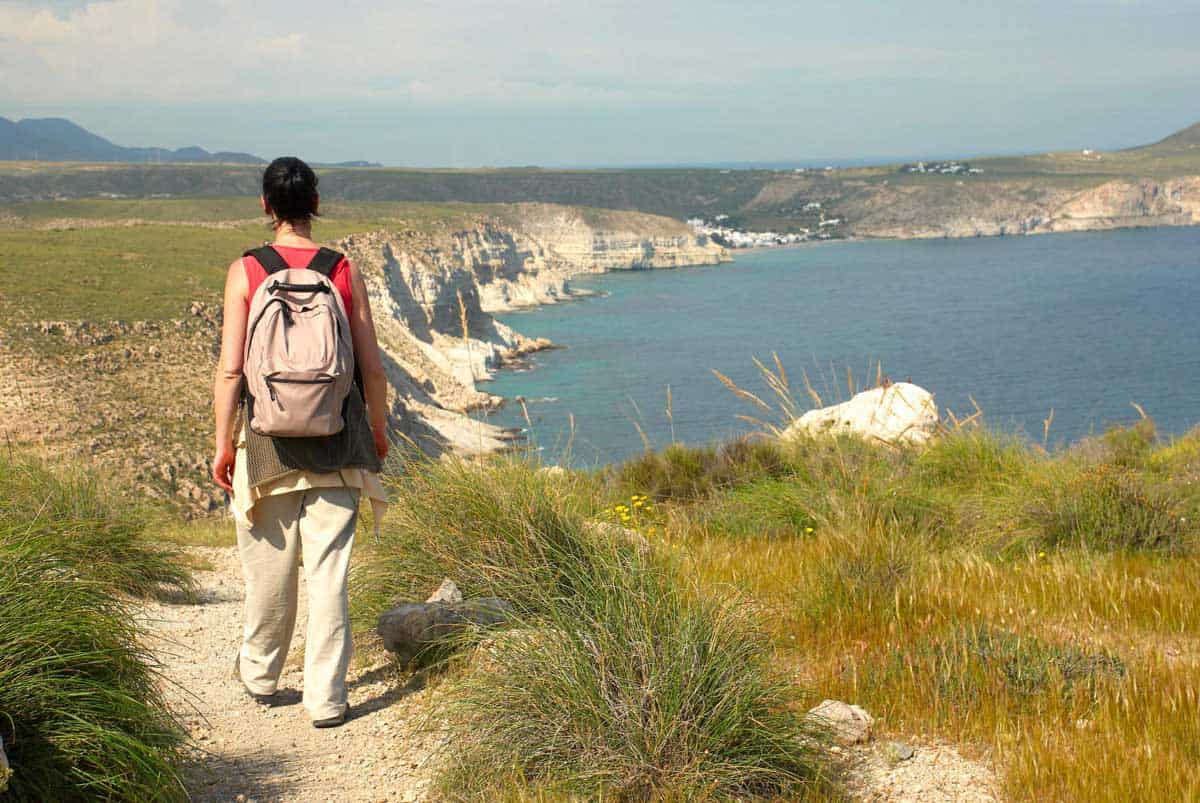The Cotswold Way national trail is an escarpment walk from Bath. It is one of Britain’s shorter National Trails, but still one of the best long distance walking routes in England. The Way offers 164 km of glorious walking in southwest England (164 km = 102 miles). It is a good option for those seeking a challenge without too much length. The route runs along almost the entirety of the western side of the Cotswolds Area of Natural Beauty (AONB).
It’s a great way to experience all the best bits of one concentrated area of beauty. For those who’ve never before ventured into the Cotswolds, this trail is a great way to fully indulge in all it has to offer.
The walk takes hikers from the market town of Chipping Campden all the way to Bath, a beautiful city of huge historical Roman importance. For the majority of the walk, the route follows the ridge of the Cotswold escarpment, which offers fantastic views.
With pretty villages, historic monuments and plenty of peace and solitude, the Cotswold Way is full of highlights. And because it’s in the south of England, the weather is typically quite reliable!
The Cotswold Way’s distance doesn’t provide too many challenges, and generally speaking, anyone who’s fairly fit should be able to tackle the trek with confidence. That said, many walkers are surprised with how many steep sections the walk includes, so it should be approached with a good degree of respect.
Which Way Should I Walk the Cotswold Way?
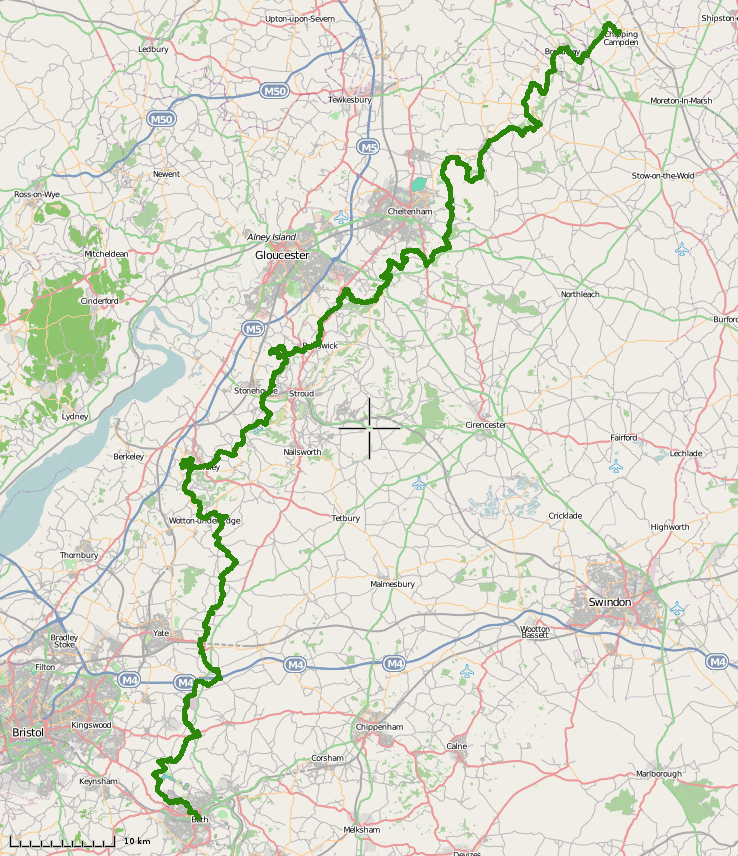
There is no one true way to take on the Cotswold Way. It’s probably true that more people choose to walk from north to south, but both directions are glorious.
If you walk the Cotswold Way north to south, you’ll finish in the world heritage city of Bath, which is a great place to end your trek. Not only is it an astonishing city, but it also offers all the luxuries and indulgences you’ll want after 164 km of walking. Bath also has more public transport options than Chipping Campden, so (depending on where you live!) it might well be easier for you to get home from Bath than it would be from Chipping Campden.
If you’d prefer to end your walk in a slightly smaller setting than the heritage city of Bath, walking south to north will be your best bet.
Where Will The Cotswold Way Take Me?

The entirety of the route is in the Cotswold area of outstanding natural beauty, making it a fantastic way to become fully acquainted with this part of the world.Add Image
Even though the route takes place in one single area of outstanding natural beauty, it also offers a huge amount of diversity over a fairly easy 164 km.
The walk features wildflower meadows of international importance along with forests full of bluebells and wild garlic.
On the Cotswold Way, you’ll also encounter plenty of heritage and history – and not only the ultra-famous sites in Bath. The walk also passes by Belas Knap a neolithic burial chamber, Hailes Abbey, and Sudeley Castle.
With history, heritage, and nature, the Cotswold Way stuffs plenty of diversity into one concentrated area of beauty. It’s almost hard to believe that it only clocks in at 164 km.
Why Should I Hike the Cotswold Way?
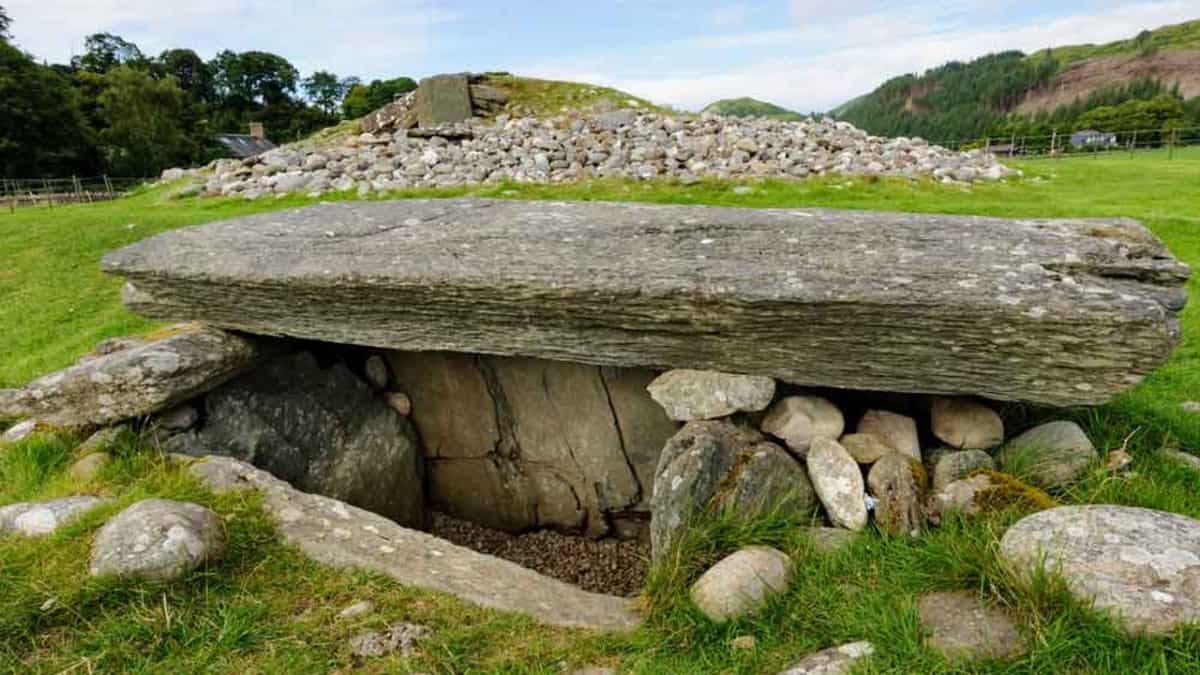
Views. The Cotswold Way offers fantastic views along its entirety, especially since the majority of the trek is along an escarpment. Ridge walks always offer astonishing panoramas, and this is a great example of the style.
For the challenge. At 164 km, this isn’t the biggest challenge that walking can offer, but it’s still a hardy task, especially given how steep some of the sections are. The end of any long walk always brings with it a fantastic sense of achievement.
It’s a great way to get healthy and active. Hiking is great for your body and mind.
To join a community of other hikers, ramblers, and trekkers. Along the way, you’ll meet many other people hitting the walk. There’s a great sense of community on a long distance walking routes, which is a hugely pleasant surprise if you’ve never been on one before.
For the many famous sites and scenes across the way. There are plenty!
What are the Best Parts on the Cotswold Way?
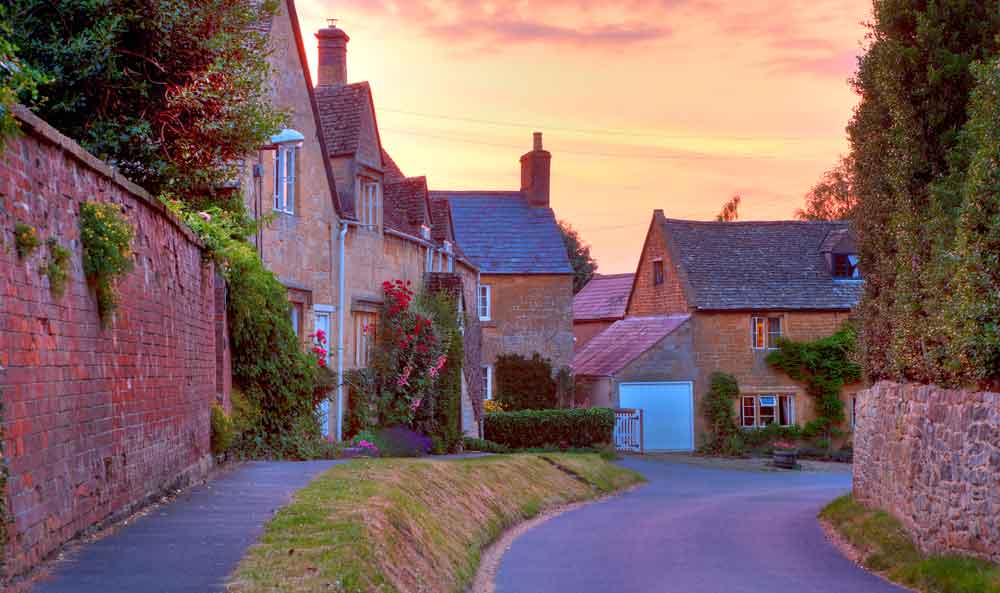
Assuming you walk north to south.
Chipping Campden: archetypally Cotswolds in so many ways, Chipping Campden is a charming slice of south-west England life. With its beautifully terraced historic high street and its wonderful architecture, it’s a lovely way to acquaint yourself with what to expect for the duration of the walk. Get to Chipping Campden the day before you start the walk to enjoy the town’s atmosphere. The town of Broadway, about 10km from here, is another beauty!
Dover’s Hill: your first magnificent view, and one of the best on the entire walk. The site of the original English Olympics, Dover’s Hill still hosts an annual event to celebrate its history.
Hailes Abbey: one of the best ruins in this part of the world, Hailes Abbey was built in the 13th century by the Duke of Cornwall. Though little remains of the Abbey, the site has a great museum and is a fascinating insight into the area’s heritage.
Sudeley Castle: though the existing structure was built in the 15th century, this place may well have been the site of a 12th century castle. With 10 gardens and fascinating architecture, it’s a great place to stop off. Catherine Parr, the 6th wife of King Henry VIII, is buried here.
Belas Knap: an excellent example of a Neolithic burial chamber, this place was built around 5000 years ago. It has an unusual false door, which may have been built to fool robbers, or as a passage for spirits. A fascinating relic from the final period of the Stone Age, this really is a unique attraction.
Cleeve Hill to Dowdeswell: the highest stretch of the entire walk, this section, of course, brings with it some of the best views. On a clear day, you can see all the way to Cheltenham and beyond. Cleeve Hill itself is the highest point along the walk – it sits at 317m.
Crickley Hill Country Park: This beautiful park offers fantastic views along with a visitor centre, which has a cafe and plenty of historical information. Full of small trails, Crickley Hill is always full of daytrippers on short jaunts.
Coopers Hill: another fantastic panoramic viewpoint, this hill is very famous. You might have heard of the international cheese rolling championships, which take place here every year. In the event, runners chase a piece of cheese (weighing up to 4kg) down the hill. The first to get to the bottom of the hill wins the race. One of the weirdest events in England, it’s now world famous – winners of previous races include competitors from Nepal, the US and New Zealand.
Painswick: a beautiful stone-built town, this is the midpoint of the Cotswold Way. If you fancy a rest halfway through your trek, this is a great place to take it. The town offers great views and a lovely historical garden. It was once famous for its wool trade.
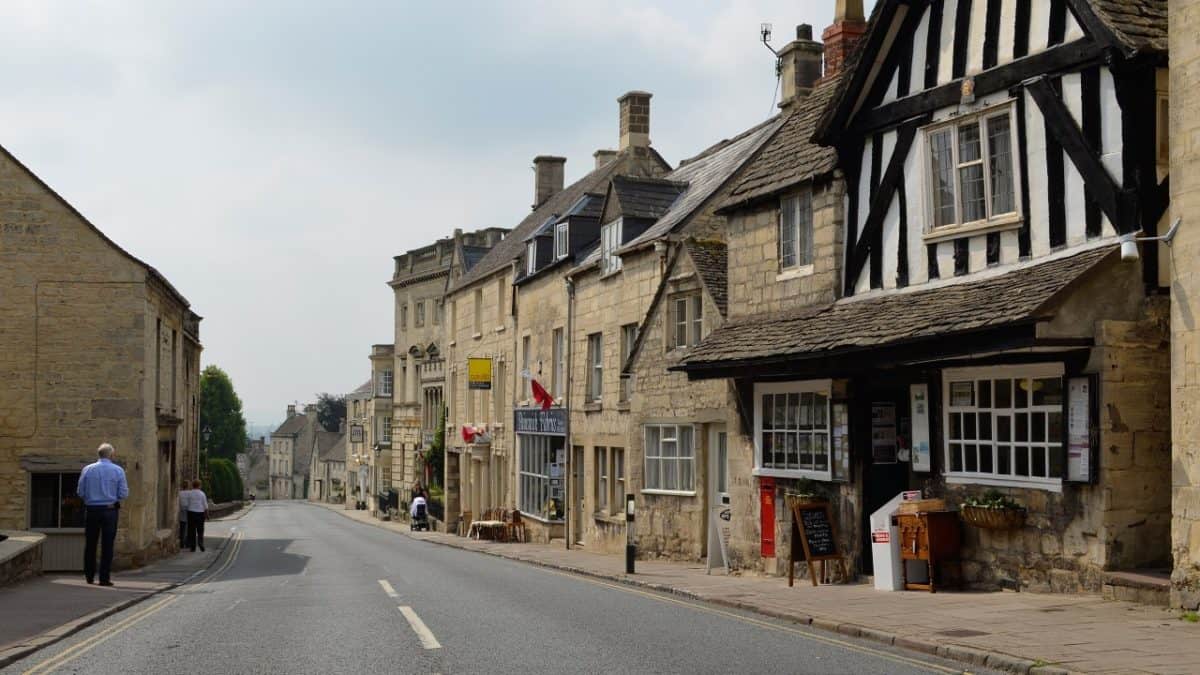
Standish Woods: a lovely woodland full of glorious greenery. In the spring, this place is revered for its bluebells and wood anemones. These woods are a perfect place to spot flowers and enjoy a picnic.
Cam Long Down: another of the great viewpoints on the Cotswold Way, Cam Long Down is popular with daytrippers coming from the nearby town of Dursley. You’ll hit Dursley on your way back down from this spot.
Horton Court: a National Trust manor house of Norman and renaissance significance, it was built in the 16th century, but has a 12th century hall.
Bath: a fantastic finale, the city of Bath is a world heritage city and a great place to end your walk. The Roman Baths which give the city its name are a real treat. Though any reconstructions here can’t immerse you in the water, there’s a nearby spa where you can indeed do just that! Other Bath highlights include the abbey, the Jane Austen Centre, and plenty of beautiful architecture.
How Long is the Cotswold Way?
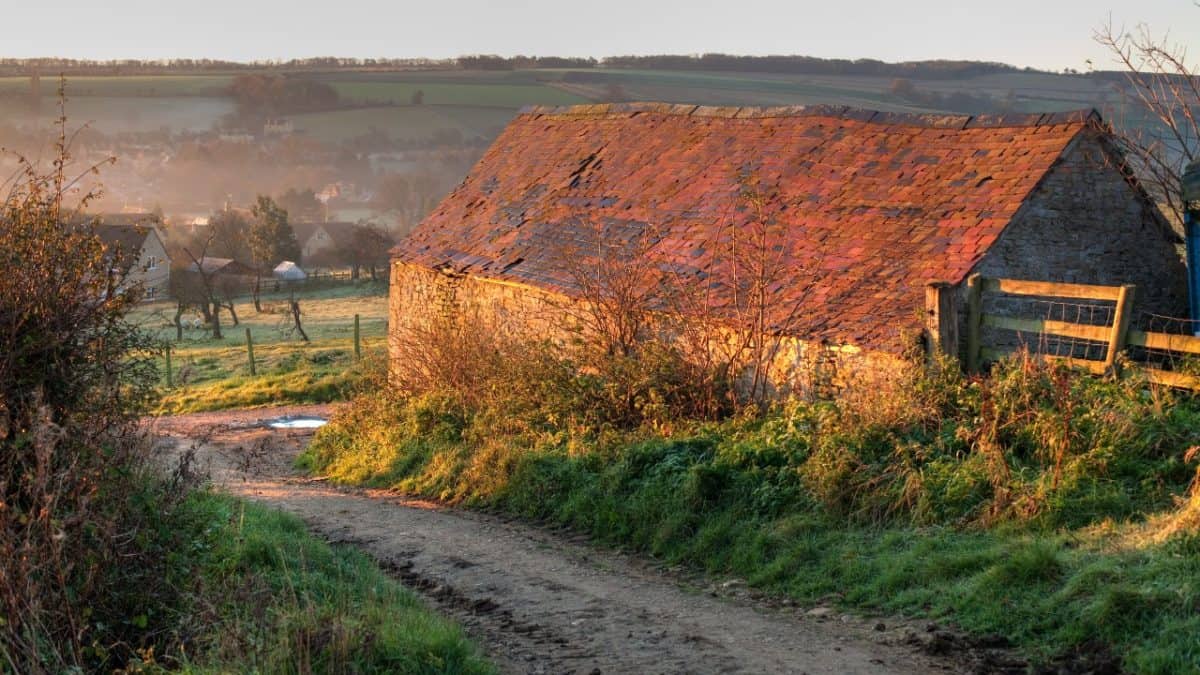
Officially the Cotswold Way national trail is 164 kilometers or 102 miles. However, you will walk a good bit further than that by looking for food, places to stay each night, and exploring the heritage of the villages and towns on the route.Add Image
How Long Will the Cotswold Way Take?
Most hikers walk the entire Cotswold Way between 7 and 10 days. If you want a leisurely walk with a focus on sightseeing, relaxing and having a few beers, take your time and stretch things out. If you’re motivated by the challenge of physical exertion, then aim for a quicker time!
Ultimately, it’s your walk, so think about why you’ve decided to embark upon it – then plan the duration of your route accordingly.
Am I Fit Enough?
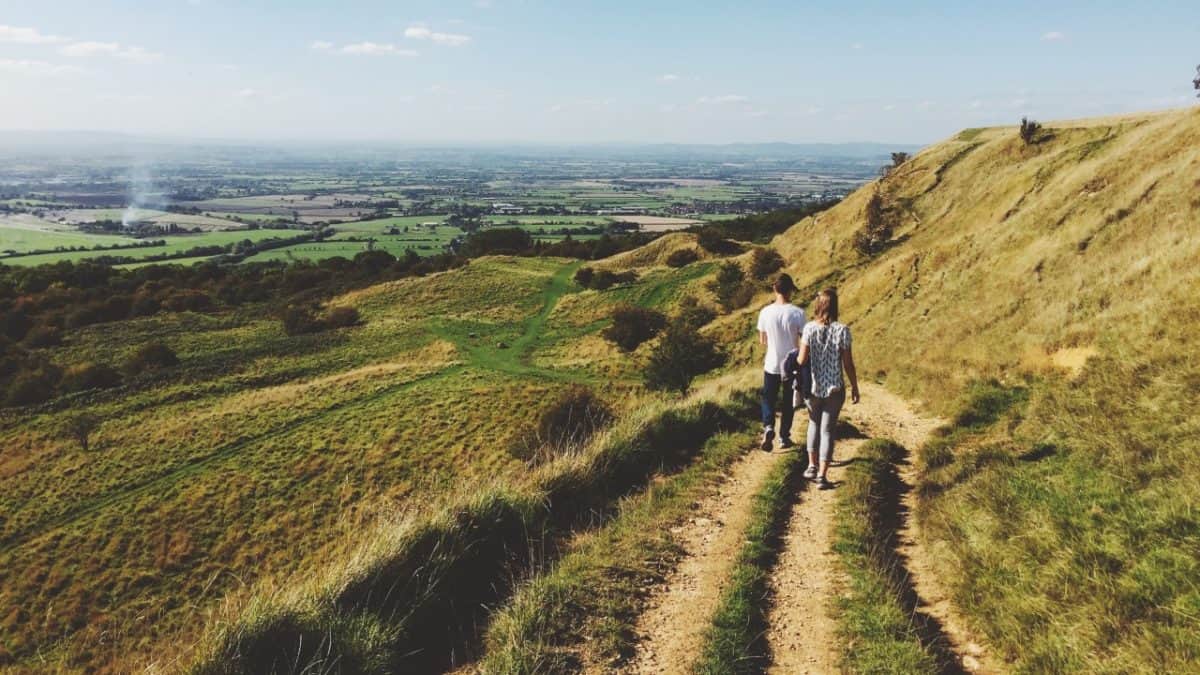
The record for running the trail sits at 19 hours and 31 minutes, set in 2014. Another runner ran the whole Cotswold Way national trail in one direction and back again in 50 hours, 40 minutes and 18 seconds.
How Difficult is The Cotswold Way?
Ultimately, the Cotswold Way is very doable, assuming that you have a decent level of fitness. Yes, there are some challenging steep sections, but if you’re a regular hiker, you’ll have no real problems here.
That said, if you’re not accustomed to long hikes like the Cotswold Way, you should do some practice. Often, a long walk can reveal weaknesses that you didn’t realise you had, especially in the joints. Knees, ankles and hips can often take a hit on long walks – so make sure you do some practice to check whether yours are up to the challenge. Tackle a couple of fairly challenging two-day walks. If you’re okay with these, you should be fine on the Cotswold Way.
It’s also essential that you wear good shoes and carry good hiking poles – but more on that later.
When Is The Best Time to Hike the Cotswold Way?
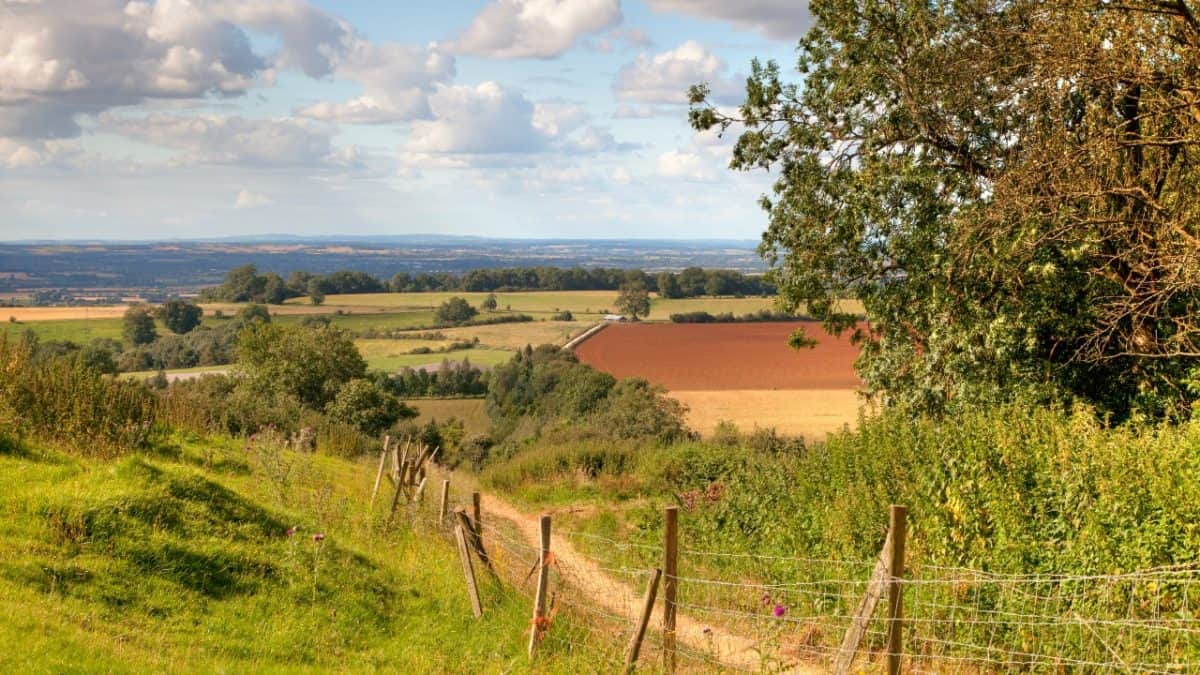
Because none of this hike has much elevation, the conditions are typically quite reliable. And since the walk is in the south of England, the weather is usually fairly warm. When planning the hike, consider whether you prefer to walk in warm weather or cold weather. It’s also a good idea to consider the length of your days. If you walk in the summer, you’ll of course have more daylight to enjoy.
If you want to enjoy the flowers and greenery along the walk, your best best is late spring or early summer. If your priority is getting the best possible views from the escarpment, you’re best walking in winter, cold though it might be!
It’s also important to consider that some stretches of this walk are often quite crowded in the summer, especially in the school summer holidays, which may deter some walkers.
Is The Cotswold Way Well-Marked?
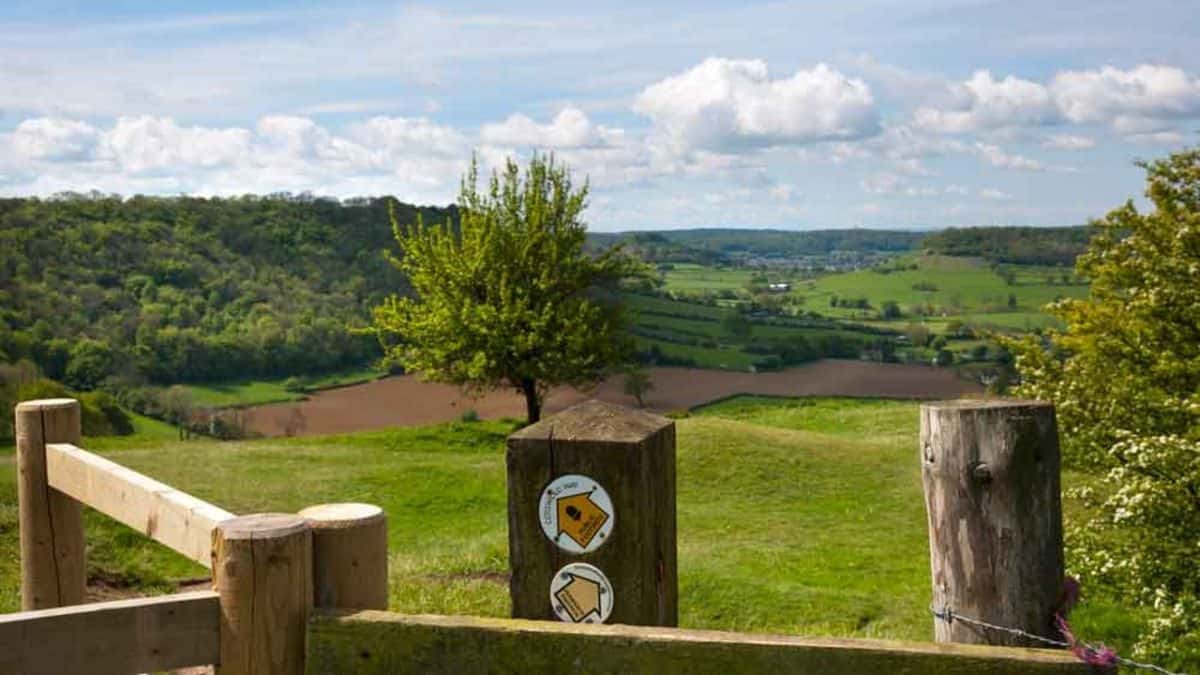
Yes. It’s very well-marked, so you’re highly unlikely to get lost at any point. The paths are also very well-worn, which makes lots of the stretches easy to follow, even without waymarking!
When hiking, you should look for the standard acorn symbol, used to denote National Trail routes.
For this walk, there’s no need at all for a compass. You should absolutely make sure you carry a guidebook to spot all of the sights along the way, but there’s no real need for any tools at all when it comes to navigation.
What Hiking Gear do I Need for the Cotswold Way?
If you’re tackling the whole walk, you’re going to need a lot of equipment:
- Clothes: Packing light is essential, but having enough clothes is also essential. You can compromise between these two important considerations by carrying clothes made from Merino Wool. Merino Wool clothes slow the spread of bacteria, so you don’t need to wash them as often. Make sure you also take a lightweight rain jacket and a hat in your backpack.
- Good shoes: It’s very important that you take high-quality hiking shoes. It’s also very important that you have practice using these shoes. If you haven’t, you likely end up with blisters or injuries. Make sure you have experience using the specific shoes which you take on the hike.
- Water bottles and purification tablets: Make sure you take a couple of good-quality hiking water bottles. Staying hydrated on a long walk is essential. Although you’re very unlikely to need them, it’s also a good idea to carry water purification tablets – it’s always good to avert disaster before it strikes. If you are not sure which bottle to get, check out our Yeti vs Hydro Flask comparison.
- First aid kit: Most walks involve some sort of injury, no matter how minor. Even a blister might need treatment! Ensure you invest in a good first aid kit to take with you. At the bare minimum, this kit should include bandages, bandaids, painkillers, rehydration sachets, and sunscreen.
- Hiking poles: It’s essential that you provide your joints with some support. Hiking over long distances (especially on downhill stretches) is bad for your joints, so poles can help.
- Food: If you’re camping, you’ll need lots of food. If not, you should still carry snacks to keep you going between meals. On some stretches, you might go a little while without any food. Carry light, calorie-dense foods – they will keep you full without taking up too much space in your pack. You can carry one of the Freeze-Dried or Dehydrated Backpacking Meals.
- Camping equipment (optional): You can camp along the route or you can stay in indoor accommodation. If you do choose to camp, you need to ensure that all of your gear is lightweight – like these best ultralight sleeping bags, high-quality, and reliable, a backpacking stove is great in the evening – but heavy. Though there aren’t lots of campsites on the route, there are just enough to get by, but you should check current information before you leave. Some farmers will let you camp their land for a small fee. It’s important to remember that wild camping is illegal in England, so if you decide to do it, you do so very much at your own risk.
Accommodation Options on the Cotswold Way
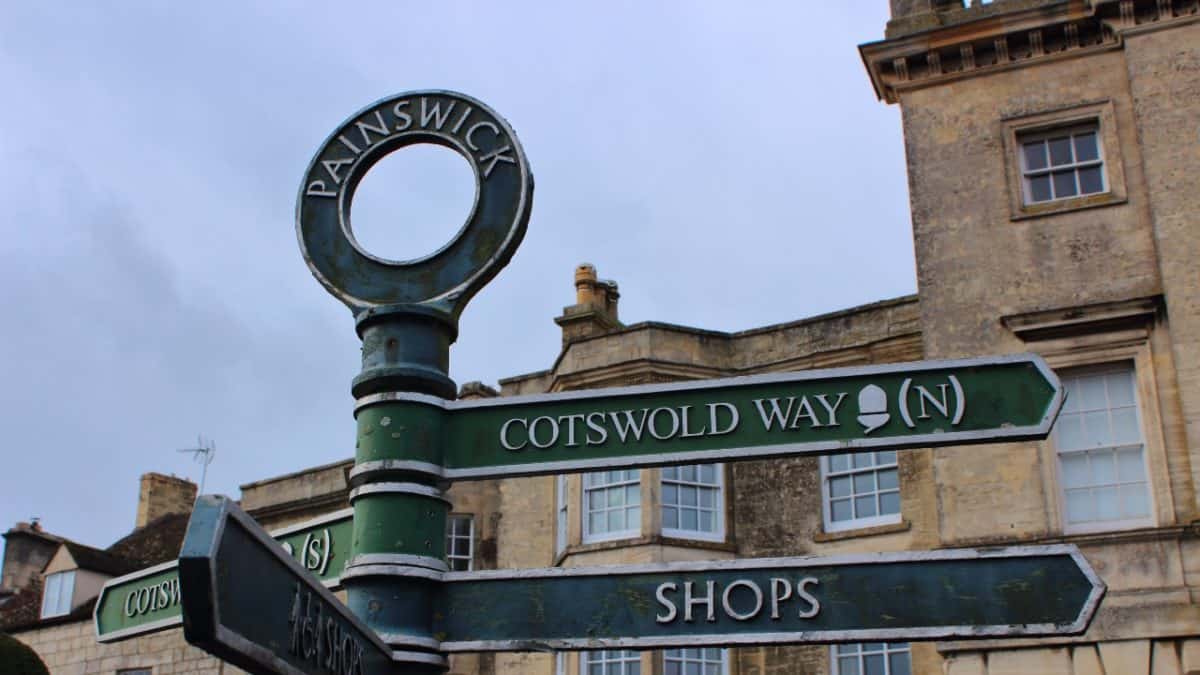
On the Cotswold Way, the vast majority of hikers sleep in indoors accommodation en-route.
Budget accommodation options are slightly limited. Many other National Trails have an abundance of hostels and cheap accommodation, but it’s not so easy to trek on a budget on the Cotswold Way. Even bunkhouses and guesthouses are mainly out of the question.
On the majority of the Cotswold Way, you’ll spend your time sleeping in pubs, hotels and bed and breakfasts. These can be pricey, but a few affordable options are available.
If budget is a big concern for you, you can mitigate the cost of accommodation by tackling the walk at a quicker pace (and therefore spending fewer nights sleeping en route). But if you’re not too bothered about a frugal hike, then you’ll be okay.
Here are some of the best accommodation options you’ll find on the Cotswold Way: Wood Stanway Farmhouse, Didbrook (http://www.woodstanwayfarmhouse.co.uk/). Located right on the route, this 17th century farmhouse has fantastic character and charm. Lovingly restored, it offers a rustic welcome along with plenty of luxury. There’s even a double room with a jacuzzi!
Glenfall Farm Bed and Breakfast, Cheltenham another beautiful market town. This place is located just under a kilometre from the main trail, but it’s worth the detour. The hosts are really friendly and welcoming and the breakfast is brilliant. With clean rooms and a friendly atmosphere, this is just what a bed and breakfast should be.
The Falcon, Painswick (http://www.falconpainswick.co.uk/). A great pub with some rooms for overnight stays, this is a nice way to experience sleeping in a pub. Having a couple of beers before turning into bed is great, especially after a long day on a long walk. The food here is fantastic.
Black Horse Inn, Nibley (http://www.blackhorse-northnibley.co.uk/). Another great pub for an overnight stay, it has excellent old English decor with a retro white facade. Again, the place provides excellent food and a nice warm welcome.
Chestnut Farm Bed and Breakfast, Tormarton (http://www.cfbb.co.uk/). Another great traditional bed and breakfast, the place was built in 1828. This is a really personable place to stay!
Bath YHA: the only YHA on the trail, this is a great place to meet other walkers, some of whom might just be embarking in the opposite direction! Like all YHA hostels, this is a fantastic budget option, and it offers a great central location. It’s of course very hiker-friendly, making it a good place to kick up your smelly feet and indulge in a session of post-walk relaxation without being judged.
Alternatively, let a tour company like Active England’s 11 day Cotswold tour book everything for you and move your bags each day.
Are There Places To Eat And Drink Along The Cotswold Way?

Yes, there are plenty. You won’t get stranded without food or drink. Unlike some other National Trails, there aren’t many huge remote stretches on the Cotswold Way. You’ll find loads of restaurants, pubs, and cafes where you can eat and drink along the way.
There are also plenty of shops along the Cotswold Way. That said, you won’t want to go hungry, so make sure you pack a fair amount of snacks before you set off – and make sure you stock up whenever you hit a decent shop.
Carry calorie-dense foods such as nuts, seeds and flapjacks, along with fruit. Even though you’ll never be too far from a place to replenish, you don’t want to be hiking on an empty stomach.
This part of the world has a few speciality foods and drinks to get your mouth around as you walk:
- Single Gloucester Cheese and Double Gloucester Cheese: arguably two of the best UK cheeses, these are a great indulgent treat, perfect for sandwiches.
- Gloucester Old Spot Pork: succulent, rich and flavoursome, this is fantastic pork!
- Tewkesbury Mustard: dating back to before the 16th century, and referenced in Shakespeare’s Henry IV, this is a famous and flavoursome mustard.
Related Hikes:
If you are interested in routes near the capital, check out the best hikes near London.
The Cotswold Way is an excellent hike, perfect for anyone who wants to hike a national trail without excessive length. It’s also a great choice for those who like panoramas – the escarpment offers relentless views of the surrounding area.
With history, heritage, and beauty, and beautiful market towns like Chipping Campden, the Cotswold Way is an excellent example of what makes National Trails so great. For a low-maintenance one that requires less planning, preparation, effort, and navigation than other National Trails, this should be top of your list.
Get your boots on, pack your bags and see why the Cotswolds Way is rightly recognized as one of the most beautiful parts of the UK, book your public transport before heading off, and make sure you see the market town of Chipping Campden.

I love hiking, backpacking, and camping. From the Camino de Santiago to the West Highland Way in Scotland or simply a great day hike on the weekend. Hiking refreshes me, my mind, and keeps my body reasonably fit. So far I have walked three Camino routes and many other long distance hikes in the UK, Canada, and around the rest of Europe. One of the best was my hike up Ben Nevis.

